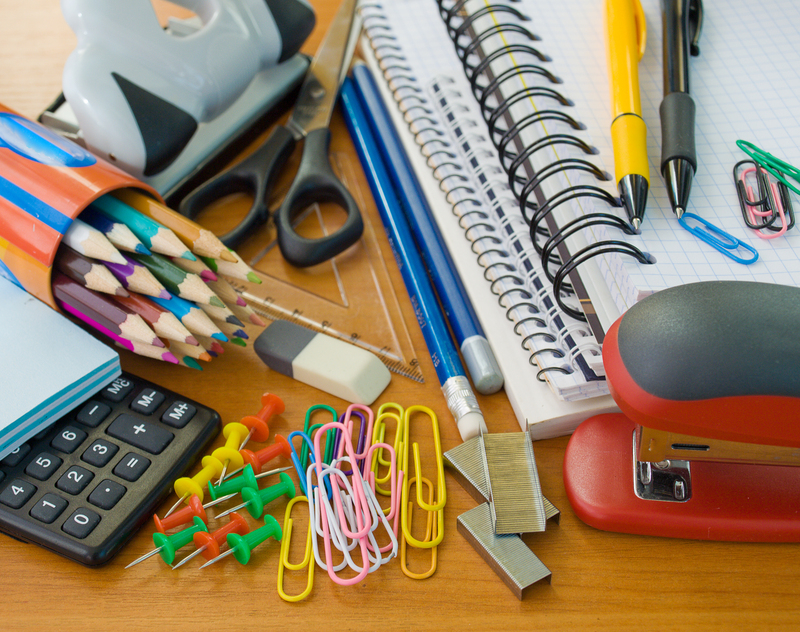Responsible Ways to Say Goodbye to Worn-Out Cookware
Saying farewell to your worn-out pots and pans can feel like the end of an era. Over time, even the best cookware--the faithful old cast iron skillet or the once-gleaming non-stick pan--reaches its limit. But what do you do when retiring old cookware? Dumping it in the trash is wasteful and environmentally detrimental. Instead, there are various eco-friendly ways to dispose of cookware that reduce your environmental impact, benefit your community, and help the planet. In this comprehensive guide, we'll explore responsible ways to say goodbye to worn-out cookware so you can transition to new kitchen essentials with a clean conscience.

Why Does Cookware Wear Out?
Before diving into disposal methods, it's essential to understand why cookware becomes unusable. With time, pots and pans can develop issues such as:
- Warped bottoms (especially in cheaper pieces or those regularly overheated)
- Peeling or flaking non-stick coatings
- Rusted surfaces in cast iron or steel
- Cracked enamel or chipped ceramics
- Loose or broken handles
- Persistent stains or odors that cleaning can't fix
Once a pan or pot can no longer do its job well--or poses health risks--it's time to retire it. But let's make sure we do it in the most environmentally responsible way possible.
Eco-Friendly Disposal of Old Cookware: The Importance of Responsible Action
Did you know that millions of tons of metal products, including old pots and pans, end up in landfills every year? Most are recyclable--but if tossed in the trash, they go to waste, contributing to pollution and resource depletion. Choosing green ways to get rid of worn-out cookware helps to:
- Reduce landfill waste
- Conserve valuable raw materials
- Lower carbon footprint by recycling metals and materials
- Encourage a circular economy--giving products new life
How to Responsibly Dispose of Worn-Out Cookware
1. Recycle Metal Pots and Pans
The majority of old cookware--including stainless steel, aluminum, and cast iron--can be recycled. Here's how to ensure your pots and pans live another life:
- Check Local Guidelines: Some curbside recycling programs accept small metal household goods. However, many do not accept cookware alongside cans and bottles, so it's crucial to verify with your local municipality's website.
- Scrap Metal Facilities: Your best bet is often a local scrap metal yard or recycling center. Scrap metal recyclers will take most cookware--even those with plastic handles, though it helps to remove non-metal components if possible.
- Prepare Your Cookware: Remove as much plastic, rubber, or wood as possible (such as handles or knobs). Give it a quick rinse to clear off food residue.
- Drop-Off: Take your cookware to the facility and place it in the appropriate bin. Some centers may even pay for certain metals, like copper, so ask ahead.
Pro Tip: If you have large quantities of old cookware--such as after a major kitchen upgrade--consider calling recycling centers first to ask about bulk drop-off or pick-up options.
2. Donate Usable Cookware
Sometimes, "worn out" is a matter of personal standard. That slightly scratched pan or faded pot could be a godsend for someone else, like college students, shelters, or nonprofit organizations. Here's how to give your cookware a second life:
- Assess Condition: Only donate items that are still functional and safe. Avoid pans with severe non-stick damage or major chipping.
- Find Local Charities: - Thrift stores such as Goodwill or Salvation Army - Homeless shelters - Women's refuges - Food banks (some accept cookware, especially for families in transition)
- Friends and Family: Offer gently-used cookware to friends, students, or neighbors who might appreciate them.
- Online Giving Platforms: - Freecycle (freecycle.org) - Buy Nothing groups on Facebook - Local community groups on Nextdoor
Donating cookware is a sustainable way to minimize waste while helping others. Just make sure items are thoroughly washed and safe to use.
3. Upcycle Into Creative DIY Projects
If you're feeling crafty, old cookware is perfect for upcycling. Here are some imaginative ways to repurpose those pans:
- Planters: Turn a leaky pot into a quirky flower pot or herb garden.
- Bird Feeders: Hang a pan or colander from a tree as a rustic bird feeder.
- Wall Art: Old cast iron skillets make great rustic kitchen wall decor. Paint or use chalkboard paint for grocery lists!
- Storage Solutions: Use large pots as catch-alls for utensils or art supplies.
- Clocks: Affix a clock kit to an old frying pan for a one-of-a-kind kitchen clock.
Upcycling cookware not only keeps items out of landfills, it also adds unique charm to your home!
4. Manufacturer Take-Back or Mail-Back Programs
A growing number of cookware manufacturers are stepping up by offering take-back or recycling programs. Here's how you can take advantage:
- Mail-Back Programs: Leading brands like Calphalon and GreenPan have recycling initiatives that let you mail in old cookware for proper disposal. Check their websites for details.
- In-Store Drop-Off: Some retailers--such as Sur La Table and local kitchenware boutiques--may offer cookware recycling days.
- Promotions: Occasionally, brands offer discounts on new products if you return your old cookware for recycling.
This is one of the most responsible ways to say goodbye to worn-out cookware--manufacturers know how to handle the materials and ensure they're recycled appropriately.
5. The Right Way to Dispose of Non-Stick Cookware
Non-stick pans--especially older ones with Teflon (PTFE)--present a unique challenge, as the coatings contain chemicals that may not be accepted by all recyclers.
- Remove Handles and Non-Metal Parts: Disassemble the pan, separating metal from plastic and rubber for easier recycling.
- Check With the Facility: Some scrap metal yards accept non-stick-coated pans, while others do not due to the chemicals involved. Call ahead.
- Mail-Back Options: Manufacturers with take-back initiatives are often well-equipped to handle non-stick cookware ethically.
Do not burn or sand down Teflon, as this can release hazardous fumes. When in doubt about the best way to dispose of non-stick cookware, consult your local recycling center or the manufacturer.
6. Ceramics, Glass, and Enamel Cookware Disposal
Ceramic and glass cookware--think Pyrex, casserole dishes, or Dutch ovens--usually cannot go in municipal recycling bins due to their unique composition. Here are greener alternatives:
- Reuse: Ceramics and glass make good planters or organizational bins.
- Donations: If they're free of chips and cracks, donate to charity shops.
- Specialized Facilities: Some recycling centers accept ceramics and glass. Use Earth911's search tool to find one near you.
Checklist: The Most Responsible Ways to Get Rid of Old Pots and Pans
- Recycle with metal recyclers or at scrap yards
- Donate usable items to charities or community groups
- Upcycle into DIY or home decor projects
- Use manufacturer take-back or mail-back programs
- Dispose of non-stick cookware through appropriate facilities
- Give glass and ceramics a second life or recycle them properly
What About Specialty Cookware?
Pressure cookers, electric skillets, and induction pans often contain electronics or mixed materials. For these, local household hazardous waste programs or electronic recycling depots are your best bet.
- Remove batteries or cords first.
- Consult your local government for e-waste collection days.
What to Avoid When Disposing of Old Kitchenware
- Never put metal cookware in regular recycling bins unless your city permits it.
- Don't toss non-stick, ceramic, or glass dishes in with glass bottles; they melt at different rates.
- Avoid leaving cookware on the curb unless using a dedicated bulk waste collection.
- Don't send items to landfill if any reuse or recycling option is possible.
Why Eco-Friendly Cookware Disposal Matters
Choosing sustainable ways to discard worn cookware is vital for both environmental and social reasons. Cookware is primarily made from finite resources like iron, aluminum, and copper. Recycling these materials:
- Requires less energy than extracting new raw materials
- Reduces environmental contamination from mining and smelting
- Keeps unnecessary waste out of our landfills
- Supports a greener, more circular economy
Additionally, gifting usable old cookware or upcycling helps build community and reduces the burden on our waste management systems.

Frequently Asked Questions
Can I throw worn-out pans in my curbside recycle bin?
No--most curbside programs do not accept cookware. Always check with your local municipality. Scrap metal facilities are generally the safest, most reliable option.
What about non-stick pans with damaged coatings?
These require special handling due to their chemical coatings. Use manufacturer take-back programs or specialized recycling facilities.
Is it safe to donate old Teflon cookware?
If the non-stick surface is not flaking or deeply scratched, it can be reused. Otherwise, it's better to recycle or dispose through appropriate channels.
Do any brands accept old cookware for recycling?
Yes--brands like Calphalon and GreenPan offer recycling or mail-in programs. Always check their websites for the most up-to-date information.
Conclusion: Making Goodbyes More Responsible
Parting ways with beloved kitchen companions is never easy, but responsible ways to say goodbye to worn-out cookware are plentiful and impactful. Whether you recycle, donate, upcycle, or participate in manufacturer take-back programs, your actions can significantly reduce environmental waste and support your community.
As you upgrade your kitchen, remember: every sustainable choice counts. Let your journey toward greener living start with how you responsibly bid farewell to your old pots and pans. Help the Earth and enjoy the new culinary adventures your updated cookware brings!